Hot Topics: National Hispanic Heritage Month
Last update: August 27, 2014
The U.S. Government, in wanting to recognize the accomplishments of Hispanic-American citizens created by Public Law 90-498 National Hispanic Heritage Week on September 17, 1968. The law was later amended by Public Law 100-402 expanding the event to National Hispanic Heritage Month on August 17, 1988.
What is a Hispanic?
Let's start by saying what it is not. It is not a racial identification. Hispanic is more of a regional identification like saying "North American." What is a Hispanic? Hispanics come in all sizes and shapes. There are Jewish, Arab, Asian, Indian, Black and White Hispanics as well as brown. What most Americans perceive as brown is actually a mix of Indian and White. When
Spanish explorers settled the Americas, they did not bring families with them like the English settlers did when they arrived in the U.S. The Spanish explorers were mostly soldiers and priests, etc. As a result, the soldiers intermarried with the Indian women they found in the countries they explored. The result was a new racial identity known as mestizos. In time, mestizos became the middle class and the largest population.
The U.S. Census Bureau defines Hispanic Origin as:
Persons of Hispanic origin were identified by a question that asked for self-identification of the person's origin or descent. Respondents were asked to select their origin (and the origin of other household members) from a "flash card" listing ethnic origins. Persons of Hispanic origin, in particular, were those who indicated that their origin was Mexican, Puerto Rican, Cuban, Central or South American, or some other Hispanic origin. It should be noted that persons of Hispanic origin may be of any race.
from: The Hispanic Population in the United States: March 1993, Current Population Reports, Population Characteristics, Series P20-475.

Religioius Identity?
Since Spain was a Roman Catholic country and they sent priests to help settle the Americas, the most prominent religious identity for most Hispanics is Roman Catholic. Yet, during the past 30 or 40 years there has been an increase of Hispanic Protetstants. According to the
CIA World Factbook,
6.6% of Mexico's population is Protestant, Nicaragua is 23.2%, Chile is at 16.4%, 15% in Puerto Rico, and Costa Rica is 14.4%.
 Where do you find Hispanics?
Where do you find Hispanics?
In the United States, Hispanics can be found in large urban centers like New York City, New Orleans, Seattle, etc., in rural areas, and in former land owned by Mexico. At one time, Mexico's territory included California, New Mexico, Arizona, Texas, Florida, and Colorado to name just a few. The vast majority of Hispanics in the United States come from Mexico, Cuba, and Puerto Rico. Mexico because of its former land holdings and due to economic problems in that country; Cuba, in order to escape the Castro regime; and Puerto Rico because it became a U.S. territory as a result of the Spanish-American War. But in recent years, more and more Hispanic immigrants are coming from Central and South America largely due to political and economic instability in those regions. Check out the U.S. Census Bureau's
2000 and 2010 Census
website to find the number of Hispanics in your community.
What are the Hispanic Origin Population Projections?
According to the U.S. Census Bureau's
1997 Population Profile of the United States (pgs. 7-8),
by the year 2050 Hispanics will become the largest minority in the U.S. at 24% surpassing
15% for African-Americans.
According to the 2010 Census , the Hispanic community is the largest minority in the country at 50,477,594 or 16.3% of the U.S. population compared to African-Americans at 38,929,319 or 12.6% of the U.S. population.
Spanish Speaking Countries in the Americas
Map of Latin America| North America | Mexico |
| Central America | Guatemala, Honduras, El Salvador, Nicaragua, Costa Rica, Panama |
| Caribbean Sea | Cuba, Dominican Republic, Puerto Rico (U.S. Territory) |
| South America | Colombia, Venezuela, Ecuador, Peru, Chile, Bolivia, Argentina, Paraguay, Uruguay |
Independence Day Dates in Latin America
| Argentina: July 9, 1810 | Guatemala: September 15, 1821 |
| Boivia: August 8, 1825 | Honduras: September 15, 1821 |
| Chile: September 18, 1810 | Mexico: September 16, 1810 |
| Colombia: July 20, 1810 | Nicaragua: September 15, 1821 |
| Costa Rica: September 15, 1821 | Panama: November 3, 1903 |
| Cuba: December 10, 1898 | Paraguay: May 14, 1811 |
| Dominican Republic: February 27, 1844 | Peru: July 28, 1821 |
| Ecuador: May 24, 1822 | Puerto Rico: U.S. territory |
| El Salvador: September 15, 1821 | Uruguay: August 25, 1825 |
Source: CIA World Factbook
Issues Confronting Hispanics
- Bilingual Education Resources from Central Washington University Library
- Black Hispanics in the United States
- Black Hispanics Struggle for Their Racial Identity by Bruno Diaz (February 13, 2005)
- Facts for Features: Hispanic Heritage Month 2013 (September 15 - October 15)
- Hispanic Reading Room -- Library of Congress
- Race Divides Hispanics, Report Says (Washington Post, Monday, July 14, 2003)
Contribution of Hispanics
- Hispanic Americans in Congress, 1822 - 2012 (.pdf) -- Library of Congress
- 100 Most Influential Hispanics for 2008 (via HispanicBusiness.com)
- The occupation of cowboy had its origins in the Pampas of Argentina. The terms rodeo (from the word rodear meaning to surround), chaps (from the word chapparera or chaparro), and lasso (from the word laso meaning rope)are Spanish in origin.
- Dr. Carlos Finlay (Cuba: became famous for his work in identifying the
mosquito as a carrier of the deadly yellow fever germ.
- Dr. Carlos Finlay (Cuba): became famous for his work in identifying the mosquito as a carrier of the deadly yellow fever germ.
- The Great Fever (via PBS' American Experience)
- Aztecs: Ancient indian civilization from Northern Mexico.
- Hispanic Americans in the U.S. Army
- Hispanic Americans Medal of Honor Recipients
- Hispanic Heritage in the U.S. Army
- History of Latinos in Major League Baseball and Their Growing Influence on the Game, The
- Impacto, Influencia, Cambio: Science, Technology, and Invention in Latin America and the Southwestern United States
- Incas: Ancient indian civilization from Peru
- Yahoo!: Incas
(link from Archive.org)
- Maya Indian (via MayaIndian.com)
- Mayan Epigraphic Database Project (MED) (via University of Virginia)
- Mundo Maya
- Resources on Aztec and Mayan Law (via University of Texas School of Law Library)
- Ancient Maya (via HistoryLink101)
- Yahoo!: Mayan
Well Known Hispanics
 Martin Sheen (born: Ramon Estevez) Hispanic-American Actor |
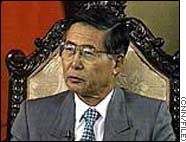 Asian-Hispanic Alberto Fujimori Peruvian President (1990 - 2000) |
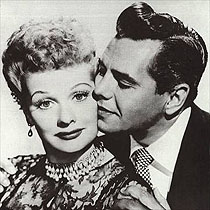 Desi Arnaz Cuban Band Leader/Actor/Producer |
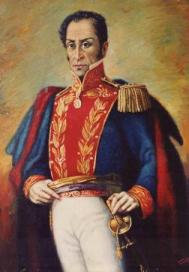 Simón Bolívar Liberator of Venezuela, Colombia, Panama, Ecuador, Peru and Bolivia |

Ellen Ochoa invented optical analysis systems and was also the world's first Hispanic female astronaut - Invention Dimension. |
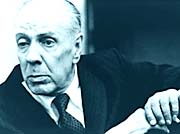 Jorge Luis Borges Argentinian Writer |
 Cameron Diaz Cuban-American Actress |
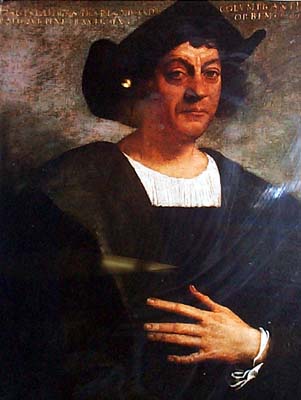 Cristobal Colón Discoverer of the New World |
 Roberto Clemente Puerto Rican Black Hispanic Major League Baseball Player Beyond Baseball: The Life of Roberto Clemente National Baseball Hall of Fame (Cooperstown) |
 Julio Iglesias  Enrique Iglesias Father and Son Hispanic Singing Sensations |
 Sonia Sotomayor Associate Supreme Court Justice of the U.S. Supreme Court |
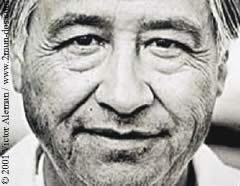 Cesar Chavez Cesar Chavez Day Hispanic American Activist |
 Carlos Santana Rock'n Roll Guitarist |
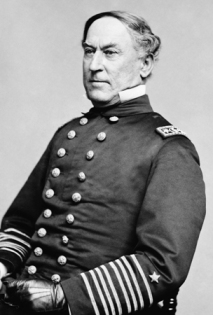 Admiral David Farragut 1st Admiral of the U.S. Navy "damn the torpedoes, full speed ahead." |
 Hilda Solis Secretary of Labor (2009 - 2013) Obama Administration |
 Franklin Ramon Chang-Diaz Astronaut |
 Donna De Varona Olympic Gold Medalist in Swimming Ranks 82nd in Sports Illustrated List of 100 Greatest Female Athletes First Female Sportscaster in Network TV Older sister of Joanna Kerns |
 Joanna Kerns Actress and Director born: Joanne Crussie De Varona Sister of Olympic Swimmer Donna De Varona |
More Links to National Hispanic Heritage Month
- Celebrate National Hispanic Heritage Month with the Register of Historic Places -- National Park Service
- Department of Defense, U.S.
- Hispanic American Innovators Advance Technology -- U.S. Patent and Trademark Office
- Hispanic Heritage Month -- Smithsonian Institution
- Hispanic Heritage Month -- U.S. Department of Veterans Affairs
- Hispanic Heritage Mnoth -- Infoplease.com
- Hispanic Heritage Month Crossword Puzzle -- InfoPlease.com
- National Aeronautical and Space Administration (NASA)
- National Hispanic Heritage Month -- Law Library of Congress
- National Hispanic Heritage Month -- Library of Congress
- Oak Ridge National Laboratory, U.S. Department of Energy
- White House
- Winning the Future: President Obama and the Hispanic Community